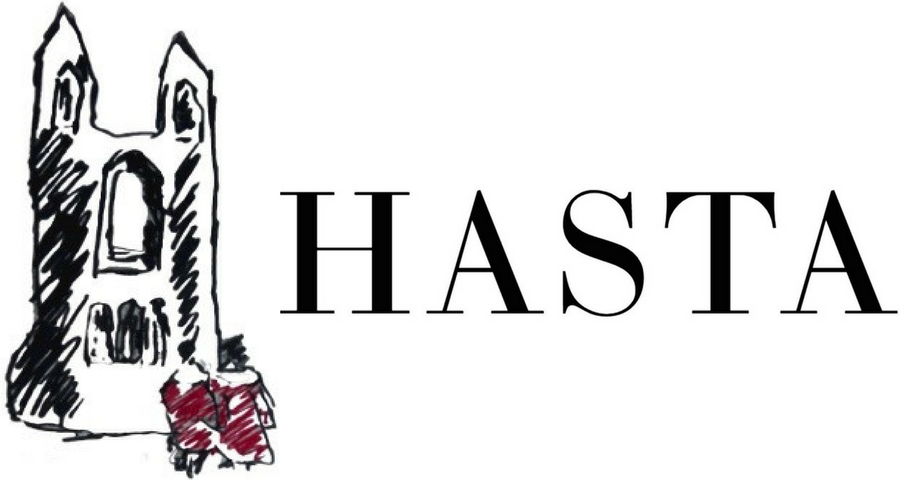The Seventh Glasgow International
By Martyna Majewska
Two Art History Honours groups went on a trip to Glasgow to see the seventh Glasgow International, a biennial festival of contemporary art at the end of the semester. Each module group had a slightly different itinerary and all students were given much freedom in their choices of exhibition sites, so I can only speak for my own experience of the festival. I will start from what was actually the end of our trip, that is, a short talk by Director Sarah McCroy.
Cosima von Boni, Who is Exploring Who in the Deep Sea, Museum of Modern Art. Photo by Martyna Majewska.
McCroy explained to us that unlike the previous iteration of the GI, the present one revolves around a set theme: the city. Certainly, it is an extremely broad theme, but the Director emphasised that she was mostly interested in Glasgow’s industrial legacy, its current post-industrial condition, and the many ways in which artists engage with both the past and the current situation. I must contend that I’m not sure if I could see that in all of the venues we visited. Some works seemed far too surrealist, or too playful at least, to engage with the down-to-earth ideas outlined by McCroy. For instance, I don’t really see how Cosima von Bonin’s gigantic sea creatures in Who’s Exploring Who In The Deep Sea at the Gallery of Modern Art relates to either the city’s history or the present context. Such a connection was much clearer in Claire Barclay’s installation located inside the beautiful yet rather desolate Kelvin Hall.
Claire Barclay, Bright Bodies, Kelvin Hall. Photo by Martyna Majewska.
Specifically, Barclay’s use of industrial materials made a reference to the 1951 Exhibition of Industrial Power held in the same venue. What von Bonin’s and Barclay’s works have in common, though, is the contrast they produce with their setting: the GI’s organisers placed von Bonin’s stuffed animals and Barclay’s raw steel constructions in historic, refined interiors. In the case of Barclay, this actually makes a lot of sense with regard to the ‘post-industrial’ theme: as McCroy pointed out, places like the Kelvin Hall are both a manifestation of the wealth produced by Glasgow’s once-thriving industry and a saddening vision of that industry’s slow death as it no longer generates enough capital to support such vast and elegant sites.
Serena Korda, Hold Fast, Stand Sure, I Scream a Revolution, Glasgow School of Arts. Photo by Martyna Majewska.
While von Bonin and Barclay are internationally famous, GI also featured a number of emerging artists. Their works were often set in smaller galleries scattered all over Glasgow. It is especially the weaving of GI’s exhibitions into the urban fabric that allowed us to see the manifold ways in which artists and their works interact with the city. The festival’s complex itinerary can lead the visitor to some lesser known corners of the town. Many are actually quite hard to find. It is equally difficult to evaluate the quality of the works displayed in the smaller galleries: it was extremely varied. I could argue the same about the quality of the installation of artworks: some shows were executed extremely professionally, other reminded me of graduate exhibitions. It seems that many artists were encouraged to bring in whatever they felt like. At the Glasgow School of Arts, for example, artist Serena Korda, mounted a set of rather eerie, oversized mushrooms which, being used as drums, comprised a musical installation; this dreamy environment was juxtaposed with Korda’s archive focusing on feminist activism in Glasgow. While both the installation and the archive were interesting, I don’t really see any correspondence between them. One unusual and resourceful curatorial approach was employed in the Pilvi Takala exhibition at the Centre for Contemporary Art: since Takala’s oeuvre is predominantly composed of video works (recordings of her social interventions), these were shown on several small TV screens with two chairs and two sets of headphones each. One could thus watch each video with a friend, or a stranger, and observe their reactions. Furthermore, this arrangement obviated the need for installing several separate dark rooms for each screening and allowed the curators to use just one gallery for multiple projections which could be shown simultaneously. Certainly, this solution had its downsides – it produced ‘visitor traffic jams’ as people had to wait to watch each video – but it did save much space and money.
Having seen only a small fraction of Glasgow International, I don’t feel capable of producing a coherent summary. The biennial is definitely characterised by the spirit of creative freedom and diversity. It also digs deep into the city’s architecture and brings attention to the often overlooked sites. Sarah McCroy seems to be the right person on the right spot, yet her talk also confirmed that GI is still evolving and that she is constantly learning new ways to improve it. While the festival ends today, it will be interesting to see where McCroy takes it next.
***
This was my last post for HASTA. A huge thank you to everyone who took the time to read this blog. I hope that my successor will have as much fun as I did. Finally, good luck to all the students graduating with me in June, and to those who will continue studying at St Andrews next year! Have a great summer!



